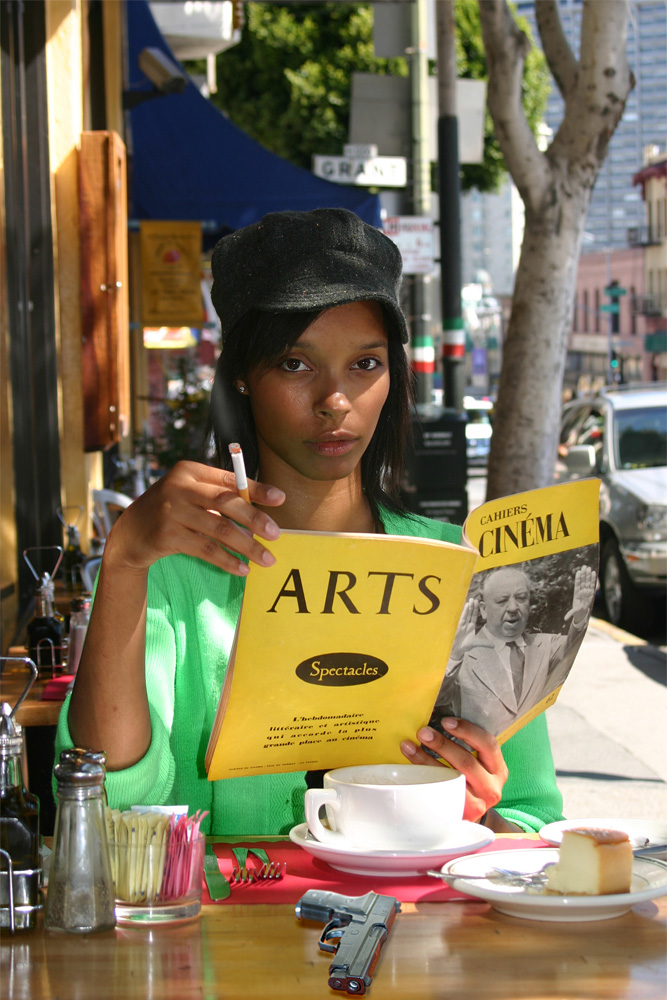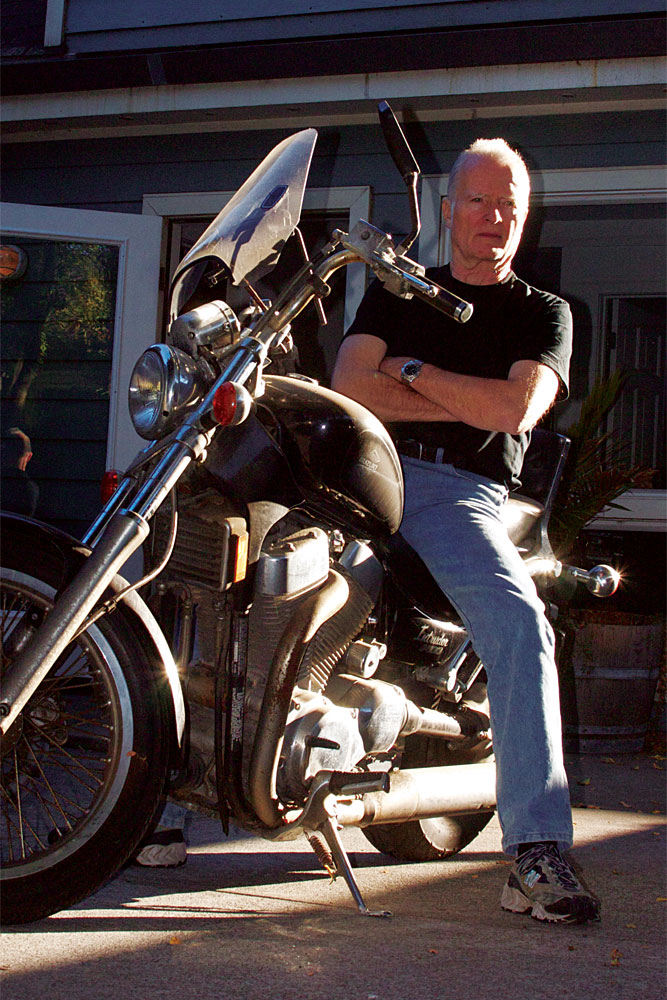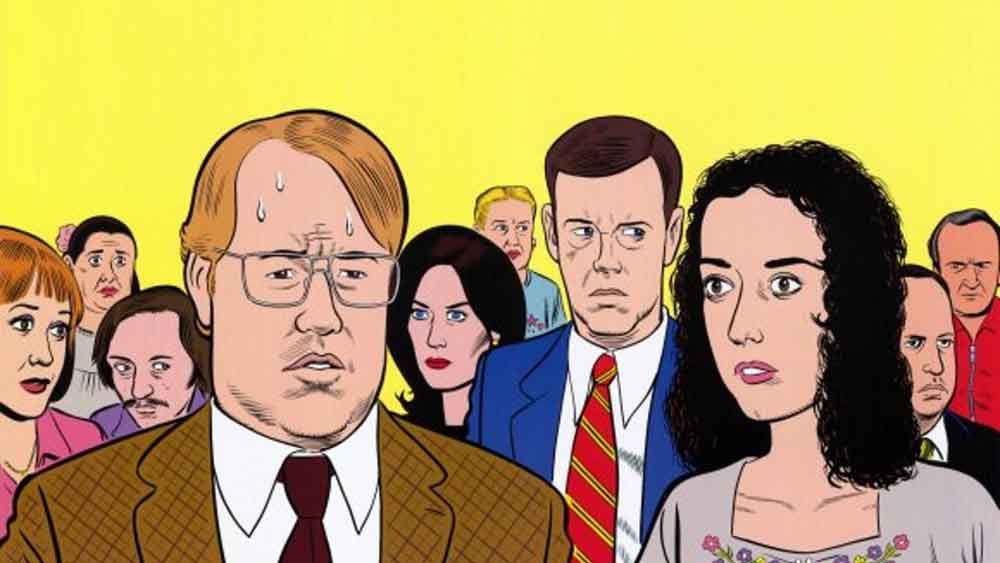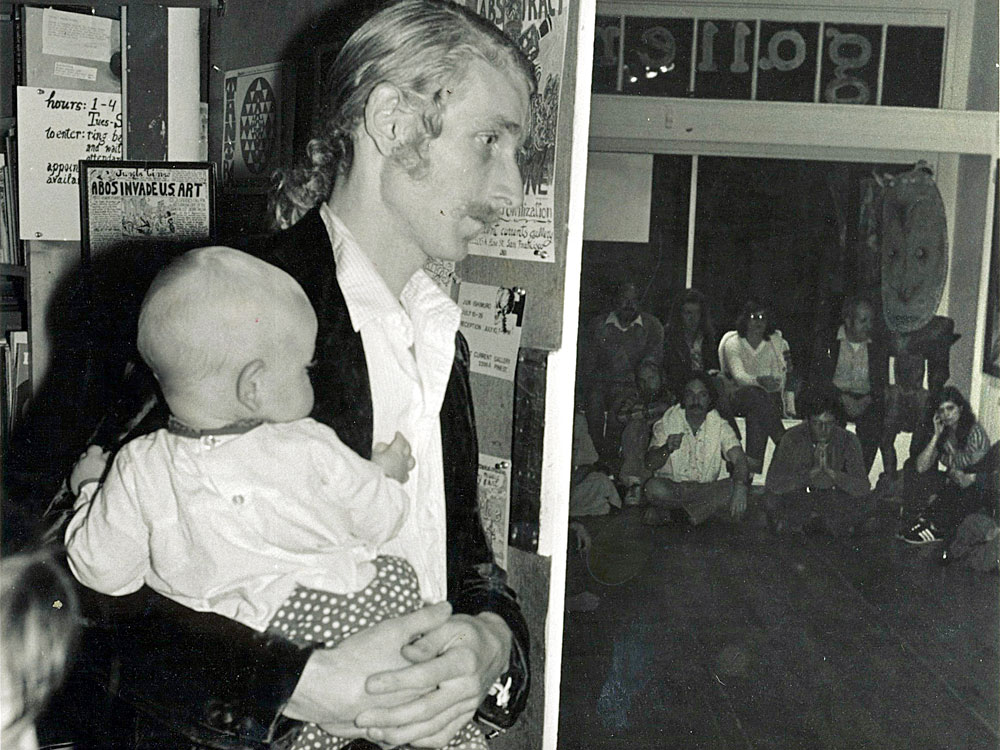
They don't make manifestos like they used to: this one, by the painter Ernst Ludwig Kirchner, is quite lovely despite its harsh rhetoric. photo: courtesy Berlin Old Museum
By Doniphan Blair
MANIFESTOS ARE UGLY BEASTS.
Utterly masculine and unlike more female conversations between equals, they appear as pronouncements from on high, no rebuttals allowed.
Think "Communist Manifesto" (1848) or the "Ten Commandments" (around 1000 BC) which, despite being buried in chapter 20 of the Bible's fifth book, set the decimal tone for all manifestos, including Marx's.
In point of fact, manifestos are themselves often rebuttals, attempts to use words as weapons against entrenched ideologies, hence, their inherent popularity amongst artists.
Alas, the art manifesto is an even stranger bird, given its attempt to draw hard lines—outside of which no coloring is allowed—around what is obviously soft. No wonder early art manifesteers stuck with standard fare.
The painter Kirchner delivered the first shot across the bow in 1906 on behalf of the German Bridge (Die Brücke) movement but his "(W)e want freedom in our work and in our lives, independence from older, established forces," pretty much describes all rebels not to mention teenagers.
The Surrealist Movement, which has given us so much great film, from the Dali-Bunuel collaboration "Chien Andalou" (1929) through Lynch's "Mulholland Drive" (2001), provided the first really rebellious manifesto. It announced they will employ: "Psychic automatism in its pure state, by which one proposes to express... the actual functioning of thought."
The first mention of film per se was by the Surrealists' cousins, the Futurists, whose manifesto claimed that they would have "cinematic analogies that use reality directly... When we want to give a sensation of strange cheerfulness, we show a CHAIR COVER
 flying comically around an enormous coat stand until they decide to join."
flying comically around an enormous coat stand until they decide to join." Such furniture flights of fancy were mercilessly attacked, 70 years later, by a coterie of Danish filmmakers, led by the talented but ice-cold Lars Von Treir. Their manifesto, Dogme 95 (1995), attempted to hybrid the narrative and documentary form and set cinema down alongside wood sculpture as a simple and naturalist endeavor. Ironically standing by the decimal system, it is so risibly dogmatic it's worth examining in full.
 Not only did the Dogme 95ers declare a manifesto, or 'vow of chastity,' as they called it, you had to sign a legalese document. photo: courtesy L. Von Trier
Not only did the Dogme 95ers declare a manifesto, or 'vow of chastity,' as they called it, you had to sign a legalese document. photo: courtesy L. Von Trier2. Sound must never be produced apart from the images or vice versa, including music.
3. The camera must be hand-held.
4. The film must be in color, with no special lighting.
5. Optical work and filters are forbidden.
6. The film must not contain superficial action such as murders, weapons, etc.
7. The film must take place here and now.
8. Genre movies are not acceptable.
9. The film format must be Academy 35mm [meaning the ratio is 3:4].
10. The director must not be credited, there is no auteur.
Dogme filmmakers disallowed so much—from dream sequences to music, lights and extraneous props and equipment—one wonders if the latter should also include cameras, obliging all Dogme films to be set inside camera factories, the crew starting to spontaneously film their co-workers in bad breakups or boss struggles, say. All joking aside, and in Dogme's case you have to, Why didn't the Dogme-ists just make documentaries?
Compare this to the folks who actually invented auteur—
1. We must make political films.
2. We must make films politically.
—although Godard besmirches his brevity of wit by adding 37 points to explain Points One and Two (why are you not surprised?).
Of course, all Godard films were essentially manifestos, starting with "Breathless" (1960), which is simultaneously a lecture on editing, a romance and cop-killer thriller not to mention a great example of his pronouncement: "All you need for a movie is a girl and gun." He went even further three years later in "Le Mépris" ("Contempt") starring the great Fritz Lang, as a director making a movie of "The Odyssey" and attempting to rebuff the American producer's attempts to commercialize it.
Getting back to the Godardian manifesto: Point One represents the standard idealistic and metaphysical perspective, the mastery of which was personified by his friend, partner and, finally, adversary, Truffaut, while Point Two "belongs to the Marxist and dialectical conception of the world." According to Godard, "Marxism struggles against idealism and the dialectical against the metaphysical" (from Point 6), including not "to make descriptions of situations" and " BRITISH SOUNDS (caps in original, 12+14).
 CineSource's visual interpretation of Godard's 'All you need for a movie is a girl and gun,' starring Krystal Nzoiwu. photo: D. Blair
CineSource's visual interpretation of Godard's 'All you need for a movie is a girl and gun,' starring Krystal Nzoiwu. photo: D. BlairFrench New Wave auteurism preceeded Godard and can be traced to French director Alexander Astruc. His manifesto, "The Birth of a New Avant-Garde: The Camera-Stylo" (1948) claimed, logically enough, that "cinema was in the process of becoming a new means of expression on the same level as painting and the novel." Therefore it could be equally abstract and "translate... obsessions exactly as... in the contemporary essay or novel. This is why I would like to call this new age of cinema the age of the 'camera-stylo.'"
While the name didn't stick (I wonder why), the ideas did. Truffaut followed suit, although his "A Certain Tendency of French Film" (1954) is hardly a manifesto, rather a long critique of French film's classicist "Tradition of Quality" which "chose only subjects which lend themselves to the misunderstandings on which the whole system rests. Under the cover of literature, and—of course, of quality—they give the public its customary dose of gloom, non-conformity and facile audaciousness."
The American critic John Hess agreed heartily, arguing that "the most important determinant of an auteur was not so much the director's ability to express his personality, as usually has been claimed [but to] express an optimistic image of human potentialities within an utterly corrupt society."
Rejecting Hess, however, was the better-known American critic Andrew Sarris. His "Auteur Theory"'s first premise "is the technical competence of the director as a criterion of value" (1962). If that doesn't make things crystal clear, the second is "The distinguishable personality of the director as a criterion of value."
Fortunately, Sarris's third and final tenet does bring some clarity: "interior meaning... from the tension between a director's personality and material... close to what Astruc defines as mise en scene but not quite... [what] Truffaut called the temperature of the director... elan of soul."
Auteur theory was nothing new, in fact. Chaplin and others dominated their projects; Welles said, "I believe a work is good to the DEGREE
 that it expresses the man [sic] who created it," and the director Irving Pichel (noted for his "memorable" "Destination Moon", 1950) remarked, "Creation must be the work of one person" (1946).
that it expresses the man [sic] who created it," and the director Irving Pichel (noted for his "memorable" "Destination Moon", 1950) remarked, "Creation must be the work of one person" (1946).A few years later, the English "Free Cinema" documentary movement, led by Lindsay Anderson, manifesto-ed in favor of naturalist, low budget filmmaking: "No Film Can Be Too Personal... Size is irrelevant. Perfection is not an aim... An attitude means a style. A style means an attitude."
Although they produced just three films, they were pretty striking. Anderson's "O Dreamland" (1953) concerned an amusement park, the second featured a jazz club and a third went so far as to focus on two deaf-mutes in wartorn London. They influenced the emerging New Wavers and the Dogme group, despite the latter's opposition to optimism as well as auteurs.
 A more benevolent statement on film, with the camera as gun, from CineSource's last paper issue, by and starring film artist Milan. photo: Milan
A more benevolent statement on film, with the camera as gun, from CineSource's last paper issue, by and starring film artist Milan. photo: Milan"Non-selectivity became the implicit guiding factor in our programming... (O)ur manifesto—if any—was to avoid this particular politic."
"Canyon was such a loose and open organization that anything like an institutional manifesto seems a bit beyond the pale," Scott MacDonald, author of "Canyon Cinema: The Life and Times" (2008) told me, also by email. Nevertheless, "Implicit within many of the correspondences/comments included in [my] book... you could deduce what could have been in a manifesto, had they written one."
The first Bay Area film manifesto-like pronouncements came from Rob Nilsson who emerged in the late 70s with his straight-to-Cannes indie "Northern Lights" (1978). Although that was a scripted film, he soon more radical views, drawing on the improv work of John Cassavetes, which in turn derived from the deep emotional commitment, sometimes derided as method acting if not monomaniac, of the Eastern European theater directors Constantin Stanislavsky and Jerzy Grotowski.
"Direct Action Cinema", Nilsson's name for his take on Cassavetes, was formulated a decade before Dogme 95, Nilsson told me. Related but not as dogmatic, it is "a practice created to allow actors and technicians high freedom and deep responsibility to create memorable cinema." Sounds good but how? From his website, Citizen Cinema:
"Create a situation, define and develop a character. Combine the two and watch them collide, attract, and repel. Build drama from this dynamic [which is] closer to the way life happens to us and we happen back.... Grow a narrative... from within and according to its own inner energies."
"Reject the ‘film as short story’ dictum promoted by Hollywood and the FILM SCHOOLS
 . Smash the iron ball and chain of excessive plot. Create a poetic cinema based not on writing but on observing."
. Smash the iron ball and chain of excessive plot. Create a poetic cinema based not on writing but on observing.""Build a cinema not of auteurs but of interpreters. Film is not a director’s medium. The magicians who bottle the genie are the actors... the magician who lets [it] out of the bottle is the editor." Nevertheless, appearing like Whitman to contradict himself, Nilsson goes on:
"Good creation always comes from the creator’s particular viewpoint... moving back and forth from inside urge to outside perception, and the end result is personal... a unique, idiosyncratic statement peculiar to the creator’s mind only."
 Prolific Bay Area Indie DIRECTOR
Prolific Bay Area Indie DIRECTOR Rob Nilsson combines the poetic visionary, macho artist and receptive improv organizer, outside his home in North Berkeley. photo: D. Blair
Rob Nilsson combines the poetic visionary, macho artist and receptive improv organizer, outside his home in North Berkeley. photo: D. Blair"Then one day the back story ends and the film begins. Nothing changes, but now we’re making the movie. I have set the actors, cameras, art directors and other creators free into their cinematic world. I am still a sort of puppeteer, yes, but a puppeteer who wants to set the puppets free."
Sure, but as with the street photography of Henri Cartier-Bresson, it is the artist, or auteur, who selects "The Decisive Moment", starting with on which continent to film (Nilsson recently went to Russia to make a film about Trotsky), where to point the camera, when to release the shutter, etc.
I doubt Nilsson would tolerate any of his liberated "puppets" descending on his editing room to dictate the final outcome of his semi-collective scripting system. He certainly didn't like this writer editing his sometimes overlong and digressive essays when he was this magazine's in-house poet-cineaste.
Direct Action may excel at telling certain intimate stories but not a "Lawrence of Arabia," (1962) or the like, although some improv could still have its place in such gargantuan productions, if the director was nimble enough. Even Hitchcock, who claimed that actors were mere cattle and that the film was essentially finished, when the script was done, included some improvisation on occasion.
While I love the loose verisimilitude of a good improv-ed moment, even the free-est of jazz musicians generally start with a written head and, after free blowing, return there to conclude. A similar system could be used to good effect by filmmakers: shoot the scene as written first but after the actors are warmed up let them riff on the material, letting the best actual version—not ideology—win in the editing room.
The Bay Area has been the site of a few other manifestos. Tiffany Shlain, a pure auteur who often places herself at the center of her films, as the onscreen narrator, eschews actual filming in favor of found footage. While she used to dig through DUMPSTERS
 and film archives, that has been replaced by the Internet and she recently announced the "Cloud Manifesto" (2012) to define her new crowdsourcing system.
and film archives, that has been replaced by the Internet and she recently announced the "Cloud Manifesto" (2012) to define her new crowdsourcing system.Respect for the group also dominates a much-remarked upon manifesto of sorts (he declined numerical trappings) issued by Ted Hope and written while the prodigious indie film producer was still in New York. Hope is currently the Director of the San Francisco International Film Festival.
Called "A TRULY FREE FILM CULTURE" (caps orig, 2008), Hope's first tenet is it "will respect the audience’s needs and desires as much as Indie [film] currently respects the filmmakers." Expanded upon in point three, Hope says: "Participants in a TRULY FREE FILM CULTURE work to participate in that community... work to get others to make a choice... what they want to see. We all become curators. We all promote the films we love."
Oddly enough, this parallels what Amazon is doing five years later, as it joined the mad race to CONTENT CREATION
 with 14 television show pilots released on May 3rd. Led by "Alpha House", about politician roomies in Washington and starring John Goodman, its showrunners are basing their artistic decisions largely on the "big data" Amazon extracts from its site.
with 14 television show pilots released on May 3rd. Led by "Alpha House", about politician roomies in Washington and starring John Goodman, its showrunners are basing their artistic decisions largely on the "big data" Amazon extracts from its site. The poster illo from 'Happiness', by Todd Solondz, a very auteur, if dark, picture, produced by Ted Hope, the prolific now-Bay Area producer and now-director of the International Film Festival. photo: courtesy T. Solondz
The poster illo from 'Happiness', by Todd Solondz, a very auteur, if dark, picture, produced by Ted Hope, the prolific now-Bay Area producer and now-director of the International Film Festival. photo: courtesy T. Solondz , the hottest new script doctor in LA, according to the NY Times (5/6/13), is a statistics professor, Vinny Bruzzese, whose Worldwide Motion Picture Group, "compare(s) the story structure and genre of a draft script with those of released movies, looking for clues to box office success."
, the hottest new script doctor in LA, according to the NY Times (5/6/13), is a statistics professor, Vinny Bruzzese, whose Worldwide Motion Picture Group, "compare(s) the story structure and genre of a draft script with those of released movies, looking for clues to box office success."While this is a more mechanical form, crowdsourcing has a nice, democratic ring to it. Regardless, we shall soon see its short term efficacy via Neilson Ratings and box office earnings. More importantly, can it work longterm considering audiences, critics and curators are often smallminded, myopic or worse?
In fact, "Vertigo" (1959), yet another surrealist tour-de-force, now rated by a majority of critics polled by the English film magazine, Sight and Sound, as "the best film of ALL TIME," was panned in its day by all major critics (English-speaking—the French loved him). They considered Hitch a "B" or "genre" filmmaker. Similarly dissed was Leone's "Once Upon A Time in the West," (1968), now considered one of the greatest Westerns—if not films sui generis—and many other certifiable masterworks.
As much as things change, they stay the same: after tens of thousands of years, we still like good food, good love and good art. Are we going to get it by crowdsourcing our creations or by leaving them in the hands of those with their hands on it, and are dirty with it, even though they sometimes produce garbage?
Hope laments the immense waste of resources involved with producing so much unexamined film but he ain't seen nothing yet, considering a glorified book store is now making television (what's next Home Depot?). Anyway, making art is the artist's proclivity.
So what are we to make of the three manifestos in this issue of CineSource: "The Oakland Film Stammer Womanifesto" by this author, one by my colleague, Davell Swan, "The Antonioni Manifesta" and "The Hitchcock Manifesto", by the HitchCult with which he is associated? While the latter remains largely hagiography, a few points are incisive and prescriptive.
Hitchcock Point Two—"The Master epitomizes the Renaissance Man, in his cinematic integration of all genres "—points towards a trans-genre universe where no holds are barred.
Point Five, meanwhile, offers an answer to the perennial problem of romanticism which—no matter how twisted—is at the center of almost all artistic impulse: "Although The Master's investigation of evil in the context of romantic relations accesses the romantic paradigm through its underbelly, within which he himself was trapped, about the conflict's final success over evil, The Master remained largely optimistic."
From his first film, "The Lodger" (1927), about a serial killer and the girl that may love him, Hitchcock usually started on the dark side. But then he forced his characters and audiences to struggle through a series of moral choices and plot complexities often driven by a young woman character and ending up with love, making him an Ur-romantic.
This ties into to Points Three and Four of the Oakland Stammer WoManifesto: "A place of great dreams, fortunes, romance, nature and beauty, California is also a repository of nightmares, poverty, loneliness, urban wasteland and ugliness; some of the most advanced iconography of this dramatic brew is in the city of Oakland."
"Reconciling these contradictions and realigning them to the noble endeavor of compound art and romantic evolution is the object of the Oakland Film Stammer."
 The author of this article, Doniphan Blair, about to read his 'Art War Manifesto' (1977), at Ancient Currents Gallery, 1981: 'We, the Abstract Aborigine Art Army, do hereby proclaim war on art. We call for an international boycott on selling art to the art ruling class..." photo: N. Blair
The author of this article, Doniphan Blair, about to read his 'Art War Manifesto' (1977), at Ancient Currents Gallery, 1981: 'We, the Abstract Aborigine Art Army, do hereby proclaim war on art. We call for an international boycott on selling art to the art ruling class..." photo: N. BlairTo address the incredible complexities of individuals of very different cultures, classes, races and gender identities, all stacked on top of each other, we need a no-holds barred, genitals-to-the-wall approach. We have to try every trick in the book to capture the imagination of the audience and not let go until we have dragged them kicking and screaming to a place where their inner-most self meets the ever-present complexity of reality.
To do this, I believe, we have to use all techniques, from improv to fully scripted, and all genres—the "Big Hotel", the "Bedroom Farce", the "Western"—with an incisive view that caters only to evolving the language of film and the visceral nature of art—not politically correct or hardline definitions. We have to search ever vigilantly for the powerful narrative—powerful because it addresses the most germane insanities of our lives—and the most artful manner of arriving to its grande finale.
Ratings and box office will dictate the Darwinian survival of any cinema meme but Darwin's earthshaking manifesto also had a second tenet: sexual selection, which is based on communication, first of DNA but then of ideas, images and relationships.
The title of my (wo)manifesto, "Oakland Stammer", is borrowed from Oakland's art movement, The Murmur, and Austin's Mumblecore, both of which coincidentally took aspects of speech for their identity. This seems appropriate since film is the next communication quantum leap after writing, which, in turn, is based on the first step into abstraction of speech, the step which made us human.
Stammering symbolizes to me a character's inability to articulate or decide what to do or say and the subsequent struggle to overcome obstacles—political, ideological or aesthetic—and work ones way to a compromise, tentative triumph or at least fullthroated communication. It is also a perfect metaphor for this magazine, CineSource itself.
Perhaps not surprisingly, the no-genre notion derives directly from Canyon Cinema, which started just over the hill from Oakland in the little hamlet of Canyon, with some of the first local alt-film showings in 1963. As Bailie told me, "We... insisted on a totally open/free (non) policy re: everything!"
Sure some alt-filmers militantly rejected "square" Hollywood films, not to mention their rivals in the alt-film scene, but many continued to attend big screen cinema, some made their own long narratives and virtually all of them mixed genres.
Some may complain that the Oakland Film Stammer is simply a hot-air blowhard tooting his own horn. Admittedly, it is a little unusual to not only proclaim a manifesto, without the backing of a coterie of cineastes (i.e. a film movement already in place) but to also write a lead article about it.
Alas, such is the business of film writing, to start the ball rolling, to produce stimulating ideas. Moreover, those of us who write, all we have is our words to save or hang us. In addition, I have always been partial to the manifesto form and, as ugly a beast as they sometimes are, it seemed worth it to risk their "pronouncements from on high" to fire another shot across the bow.
http://cinesourcemagazine.com/index.php?/site/comments/manifestos_hot_or_just_hot_air/#.U_S31_ldXNk

No comments:
Post a Comment